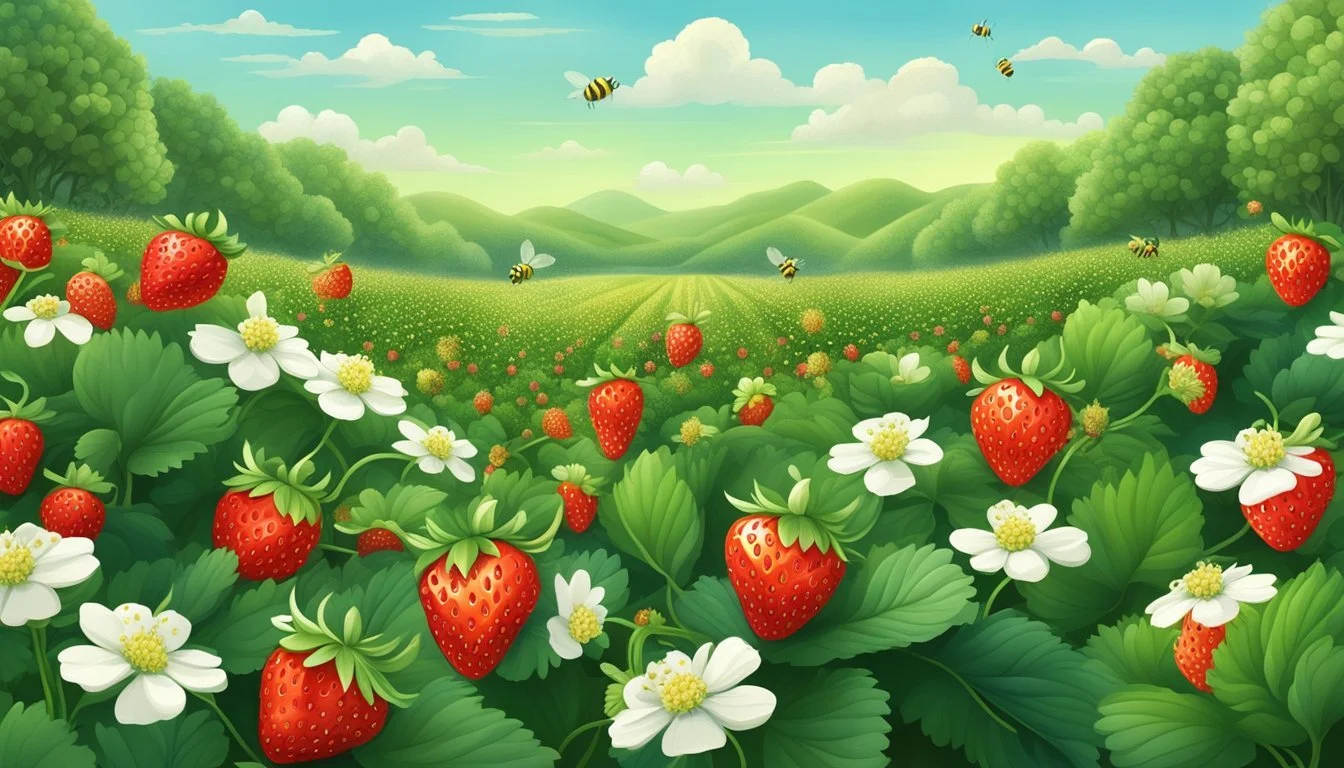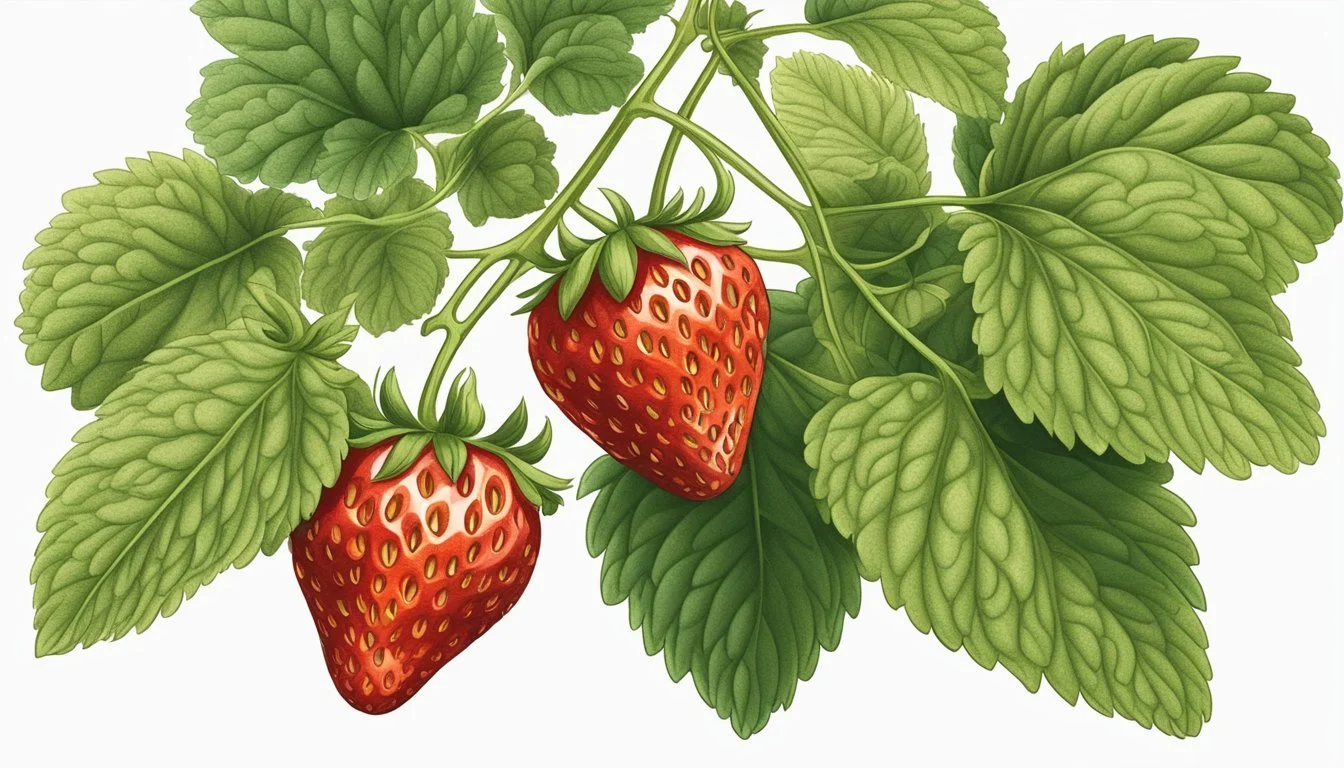How to Tell If Strawberries Are Ripe
Selecting the Sweetest, Juiciest Fruit
Determining the ripeness of strawberries is essential for both gardeners and consumers alike, as it significantly influences the fruit's flavor and shelf life. Ripe strawberries are distinguished by their vibrant red color, indicating they have reached peak sweetness and juiciness. As strawberries do not continue to ripen after being picked, it is crucial to harvest them at the right stage. The texture, scent, and firmness are additional indicators that can guide individuals in distinguishing a ripe berry from one that is still immature or past its best condition.
In the journey from garden to table, proper handling is just as important as timing the harvest. Once picked, strawberries should be treated with care to maintain their delicate structure and prevent bruising. Preserving the freshness of strawberries after picking involves keeping them cool and consuming them quickly, as their high sugar content renders them perishable. When dealing with strawberries beyond the garden, choosing the best quality from the market entails a similar process of assessment to ensure optimal flavor and longevity.
Key Takeaways
Ripe strawberries exhibit a deep red color and sweet aroma.
Ideal harvesting involves picking at the correct ripeness to maximize flavor.
Careful handling and prompt consumption preserve strawberry quality post-harvest.
Identifying Ripe Strawberries
When selecting strawberries, it's essential to examine their color, texture, and scent to ensure peak ripeness and sweetness.
Assessing Color and Sheen
A ripe strawberry will display a uniform deep red color from the tip to the stem, an indicator that the berry has received ample sunlight and developed its natural sugars. The surface should be glossy, which reflects a healthy, ripe fruit.
Feeling the Texture
A strawberry's texture is telling; a ripe berry is firm to the touch, but not hard. It should exhibit a slight give under gentle pressure, indicating juiciness without being mushy. Overly soft berries are generally past their prime.
Smelling for Sweetness
The aroma of strawberries can be a reliable gauge of their ripeness. Ripe strawberries should emit a sweet, fruity smell. A lack of scent or an off odor suggests the berries are either underripe or overripe, respectively.
Pre-Harvest Considerations
Prior to harvesting strawberries, the grower must consider the specific variety of strawberry and the environmental conditions to ensure ripeness. Recognizing differences in variety and providing optimal ripeness conditions are crucial for a successful strawberry harvest.
Understanding Strawberry Varieties
Strawberries come in various varieties which may influence the peak season for harvest. June-bearing strawberries typically yield a single large harvest in early summer, though the exact timing can vary based on local climate conditions. Ever-bearing varieties produce two to three harvests throughout the spring, summer, and fall, and day-neutral plants can produce fruit continuously throughout the growing season, given appropriate conditions.
Optimal Conditions for Ripeness
For strawberries to reach optimal ripeness, they require certain conditions. Sunlight is pivotal; strawberries need full sun exposure for the highest quality fruit development. The environment should generally be warm, but not excessively hot, as extreme temperatures can affect the ripening process. Ideal temperatures for strawberry ripeness usually hover around room temperature, facilitating the natural ripening without inducing overripeness or spoilage.
Picking the Perfect Berry
Selecting strawberries at peak ripeness not only ensures the best possible flavor, but it also maintains their freshness post-harvest. Recognizing the optimal time and employing the correct technique are crucial to securing the finest berries from your garden or the market.
Timing Your Harvest
The optimal time to pick strawberries is typically in the cool of the morning. This is when strawberries have the highest sugar content and are less likely to be damaged by the heat of the day. Harvest frequency should be about every 2 to 3 days during the peak season to catch berries at their prime. It's worth noting that the strawberry season can span from late April to early July, with regional variations.
Proper Picking Technique
When one is ready to pick strawberries, they should do so with care to keep the berries fresh. The proper technique involves:
Grasping: Gently hold the stem just above the berry between the forefinger and the thumb.
Twisting: Slightly twist the stem to release the strawberry.
Plucking: Carefully pluck the fruit without squeezing it, which could cause bruising.
Placement: Place picked strawberries into a container in a single layer to minimize bruising and crushing.
Fresh strawberries are delicate; thus, a tender approach is paramount to preserving their quality from the garden to the table.
Post-Harvest Handling
Once strawberries are picked, they stop ripening, unlike fruits like bananas that can continue to ripen off the vine due to ethylene gas. Proper post-harvest handling is critical to maintain their quality and extend their shelf life.
Ripening Picked Strawberries
Strawberries do not ripen after being picked, so they should be harvested when fully ripe. They lack the capacity to generate significant amounts of ethylene—a plant hormone involved in the ripening process—unlike bananas that can turn from green to yellow post-harvest. Consumers often look for the flavor and sweetness that come with peak ripeness, which starts in the field, not on the shelf.
Storing Strawberries Correctly
To maintain optimal freshness, strawberries should be stored in the refrigerator immediately after picking. The recommended storage conditions are 32°F (0°C) and 90-95% relative humidity. The cool temperature slows down the degradation process, and high humidity prevents moisture loss. Strawberries can be stored in:
Open quarts or gallons: A common method for marketplace sales.
Ventilated quart clamshells: Ideal for preventing moisture accumulation and allowing cold air to circulate.
Airtight containers are not recommended for strawberries, as they need ventilation to prevent condensation and mold growth. If consumers must hold them at room temperature for any time before refrigeration, the duration should be as short as possible to minimize quality loss.
Preserving Freshness
Maintaining the freshness of strawberries requires proper handling and storage techniques. These practices help extend the shelf life of the fruit and prevent mold and spoilage that can quickly diminish quality.
Methods to Extend Shelf Life
When storing strawberries, one must be meticulous to retain their freshness. First, avoid washing the fruit until ready to eat, as moisture can hasten spoilage. For best results, strawberries should be stored in the refrigerator where the cooler temperatures slow down deterioration. Here are specific steps to follow:
Temperature: Keep strawberries in the refrigerator at temperatures around 36°F to 40°F.
Humidity: Maintain humidity levels in the refrigerator's crisper drawer between 90-95% to reduce moisture loss.
Storage: Store strawberries in a partially closed container with a paper towel to absorb excess moisture. This balances humidity and ventilation.
Paper Bag Method: For those looking to ripen strawberries slightly, placing them in a paper bag at room temperature can help. This facilitates the containment of ethylene gas, which accelerates ripening.
Preventing Mold and Spoilage
Strawberries are especially susceptible to mold due to their high water content. To combat this:
Inspection: Regularly inspect strawberry plants and the fruit for signs of mold or damage. Removing affected berries promptly can prevent the spread of mold.
Preparation: When preparing to store strawberries, gently pat them dry after washing—if they must be washed—and ensure they are complete dry before refrigeration.
Rotation: Consistently rotate the stock, placing newer strawberries beneath older ones, to use them in the order of freshness.
Separation: Do not store strawberries near foods that emit strong odors, as they can absorb these smells and affect their flavor.
By following these methods, one can significantly extend the freshness of strawberries and enjoy them longer.
Strawberries Beyond the Garden
After ensuring strawberries are ripe, their journey doesn't end in the garden. Ripe strawberries, with their delicate flavor, can be preserved or transformed in the kitchen. Storage and culinary creativity are key to extending their enjoyment.
Freezing and Refrigeration Tips
Freezing: To preserve the flavor of ripe strawberries, proper freezing methods are necessary.
Pre-freeze: Wash and pat dry the strawberries. Remove the stems and hulls. Arrange them in a single layer on a baking sheet to pre-freeze.
Storage: Once frozen solid, transfer the strawberries into airtight containers or freezer bags. This prevents freezer burn and retains flavor.
Refrigeration:
Temperature: Store ripe strawberries in the coldest part of the refrigerator.
Container: They should be in a breathable container, lined with paper towels to absorb excess moisture.
Incorporating Strawberries in Recipes
Utilizing ripe strawberries in recipes allows their flavor to shine.
Salads: Add sliced ripe strawberries to enhance the flavor profile of a fresh salad.
Desserts: Incorporate them into desserts like shortcakes or tarts where their flavor can be the centerpiece.
Sauces: Puree ripe strawberries to create flavorful sauces that can complement both sweet and savory dishes.





